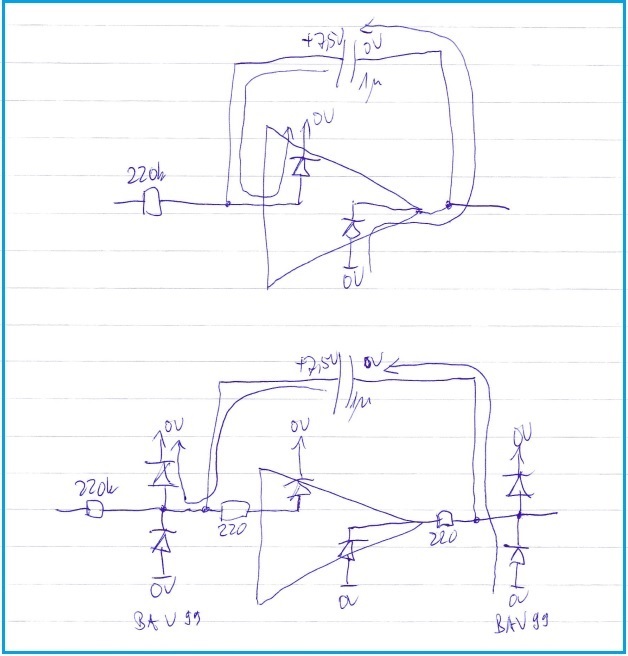Other Parts Discussed in Thread: TLV274
Hello,
My company has a design using the LMC6024 quad amplifier, powered V- = 0V, V+ = 14.5V. It has worked great for a number of years, however lately our newer boards have been having problems. Sometimes when these boards power up the first op-amp stage (non-inverting) will have an output that remains at 0V regardless of the voltage on the non-inverting input. The only way to get the op-amp working again is to power cycle the entire board. I've tried swapping op-amps from older boards to newer boards and this problem only seems to track to the new op-amps. Does anyone have any suggestions or has anyone seen this same behavior?




